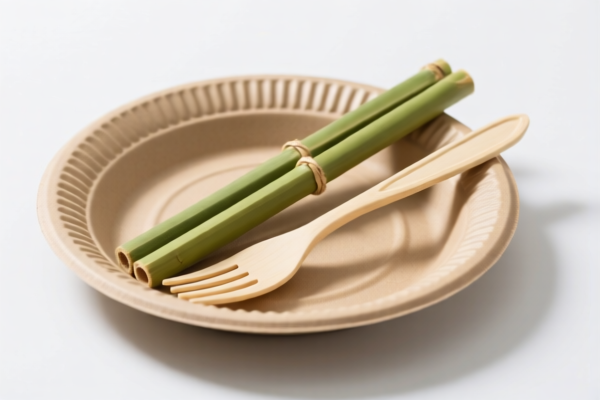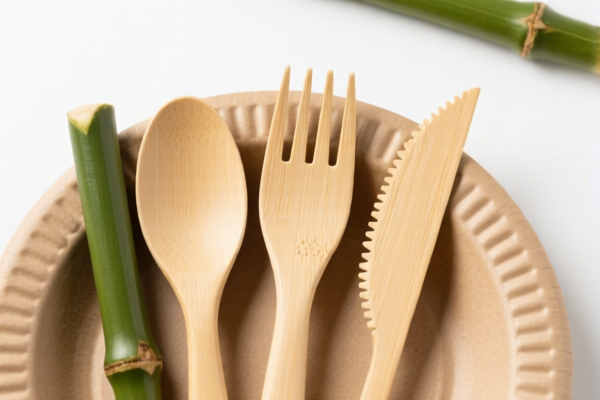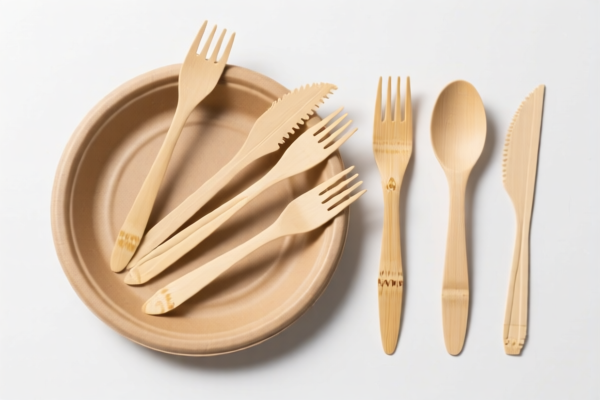| HS Code | Official Doc | Tariff Rate | Origin | Destination | Effective Date |
|---|---|---|---|---|---|
| 3924101000 | Doc | 33.4% | CN | US | 2025-05-12 |
| 3924102000 | Doc | 44.0% | CN | US | 2025-05-12 |
| 6307909870 | Doc | 37.0% | CN | US | 2025-05-12 |
| 6307909870 | Doc | 37.0% | CN | US | 2025-05-12 |
| 6305900000 | Doc | 43.7% | CN | US | 2025-05-12 |
| 6305390000 | Doc | 45.9% | CN | US | 2025-05-12 |
| 4706100000 | Doc | 55.0% | CN | US | 2025-05-12 |
| 4706200000 | Doc | 55.0% | CN | US | 2025-05-12 |
| 4707900000 | Doc | 55.0% | CN | US | 2025-05-12 |
| 4707100000 | Doc | 55.0% | CN | US | 2025-05-12 |




Disposable Tableware
Disposable tableware encompasses a wide range of products designed for single-use meal service. These items are commonly used to avoid the need for washing dishes, simplifying cleanup and enhancing convenience, particularly in situations with large numbers of diners or limited washing facilities.
Materials
A diverse array of materials are employed in the manufacture of disposable tableware, each offering different properties in terms of cost, durability, and environmental impact:
- Paper: Commonly used for plates, bowls, cups, napkins, and placemats. Often coated with wax, polyethylene (PE), or polylactic acid (PLA) for liquid resistance.
- Plastic: A broad category including polypropylene (PP), polystyrene (PS), polyethylene terephthalate (PET), and bioplastics like PLA. Used for a wide variety of items, from cutlery to containers.
- Bamboo: Increasingly popular as a sustainable alternative, offering a natural aesthetic and compostability. Typically used for plates, bowls, and cutlery.
- Wood: Birchwood is a common choice for cutlery, providing a natural, compostable option.
- Bagasse: A byproduct of sugarcane processing, bagasse is a fibrous material used to create plates, bowls, and containers. It is compostable.
- Palm Leaf: Naturally fallen palm leaves are pressed into plates and bowls, offering a rustic appearance and compostability.
- Foam: Typically polystyrene foam, used for insulated cups and containers. Less common due to environmental concerns.
Purpose and Function
The primary function of disposable tableware is to provide a convenient and hygienic means of serving food and beverages without the need for repeated washing. Specific purposes include:
- Convenience: Reducing labor and time associated with dishwashing.
- Hygiene: Minimizing the risk of cross-contamination.
- Portability: Facilitating easy transport of food and beverages.
- Cost-effectiveness: In certain situations, disposable tableware can be more economical than washing reusable items.
- Event Service: Ideal for parties, picnics, catering, and large gatherings.
Usage Scenarios
Disposable tableware is employed in a broad spectrum of settings:
- Fast Food Restaurants: A standard offering for takeout and dine-in service.
- Parties and Events: Simplifies cleanup and enhances convenience.
- Picnics and Outdoor Gatherings: Facilitates easy transport and disposal.
- Catering: Streamlines service for large events.
- Healthcare Facilities: Provides hygienic single-use options.
- Schools and Offices: Convenient for cafeterias and break rooms.
- Food Trucks: Essential for serving food on the go.
Common Types
- Plates: Available in various sizes and materials (paper, plastic, bamboo, bagasse).
- Bowls: Used for soups, salads, and other dishes, constructed from similar materials as plates.
- Cups: Available in hot and cold beverage options, made from paper, plastic, or foam.
- Cutlery: Forks, knives, and spoons typically made from plastic, wood, or bamboo.
- Napkins: Paper napkins are the most common type.
- Containers: Used for takeout and food storage, made from plastic, foam, or bagasse.
- Straws: Plastic or paper straws for beverages.
- Tablecloths: Disposable paper or plastic tablecloths for event service.
Disposable tableware generally refers to tableware designed for single-use, typically made of plastic or other materials. Based on the provided information, the following HS codes are relevant:
- 3924101000: This HS code falls under Chapter 39: Plastics and articles thereof. Specifically, it covers Tableware, kitchenware, other household articles and hygienic or toilet articles, of plastics: Tableware and kitchenware: Salt, pepper, mustard and ketchup dispensers and similar dispensers. While this specifically mentions dispensers, it falls within the broader category of plastic tableware. The basic tariff is 3.4%, with no additional tariff currently, but a 30% additional tariff will apply after April 2, 2025, resulting in a total tariff of 33.4%.
- 3924102000: Also under Chapter 39: Plastics and articles thereof, this HS code covers Tableware, kitchenware, other household articles and hygienic or toilet articles, of plastics: Tableware and kitchenware: Plates, cups, saucers, soup bowls, cereal bowls, sugar bowls, creamers, gravy boats, serving dishes and platters. This is a more direct match for common disposable tableware items. The basic tariff is 6.5%, with an additional tariff of 7.5% currently, increasing to 30% after April 2, 2025, for a total tariff of 44.0%.
- 6307909870: This HS code is under Chapter 63: Other made up articles, including dress patterns. Specifically, it covers Other: Other: Other Face masks, including respirators without replaceable filters: Other face masks: Disposable. While categorized as face masks, the description includes "disposable" and could potentially apply if the tableware is marketed with a similar single-use intention. The basic tariff is 7.0%, with no additional tariff currently, but a 30% additional tariff will apply after April 2, 2025, resulting in a total tariff of 37.0%.
It is important to note that the correct HS code classification depends on the specific material composition and intended use of the disposable tableware. If the items are plastic-based, HS codes 3924101000 or 3924102000 are more likely to be applicable.
Customer Reviews
No reviews yet.